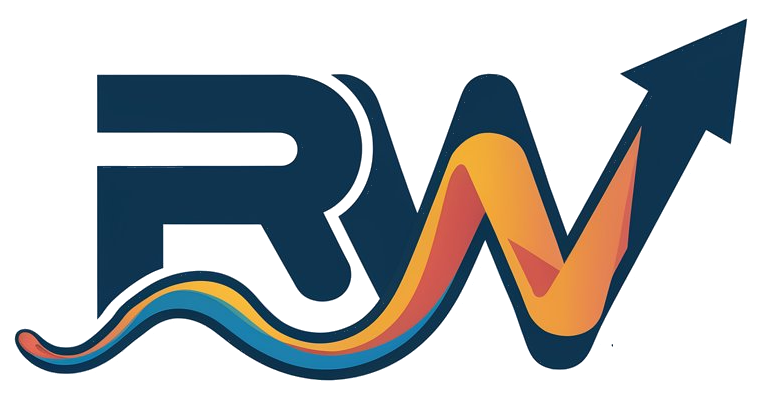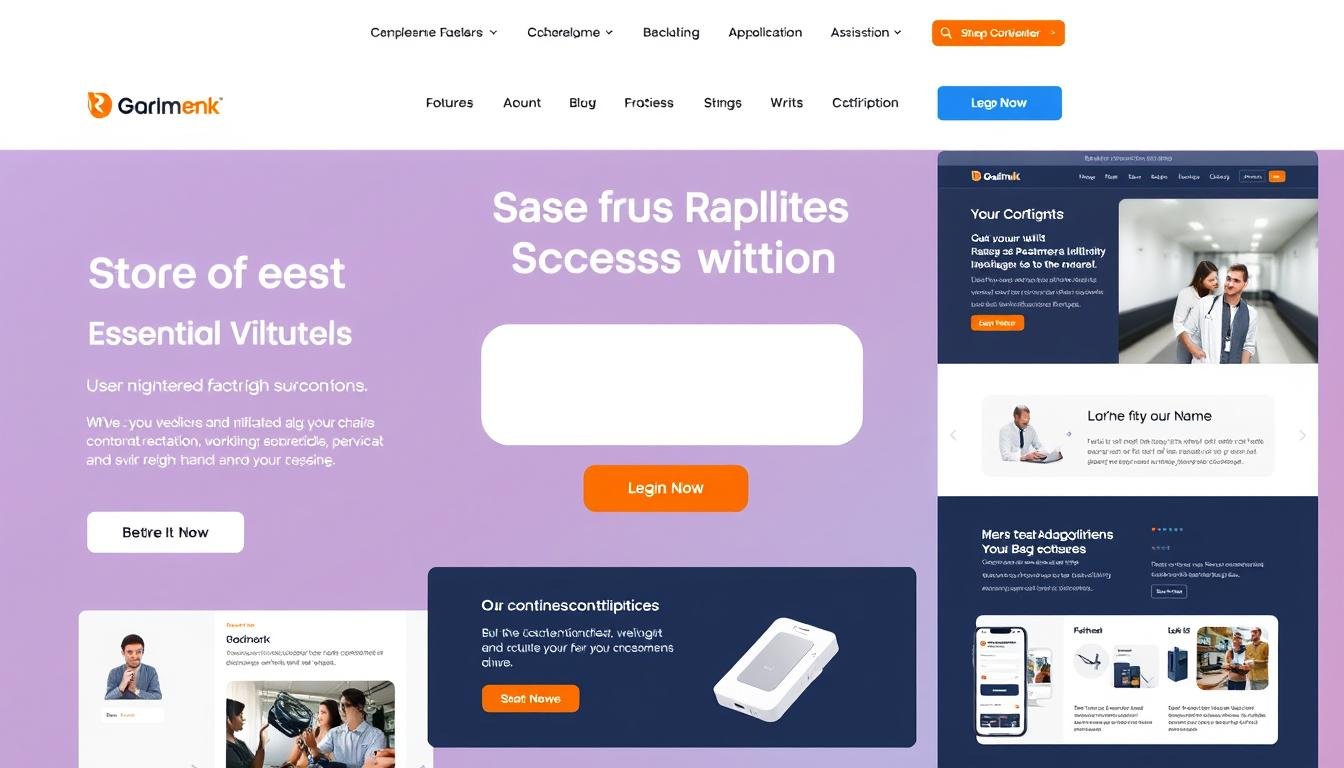In today’s digital landscape, where Google processes over 5.6 billion search queries per day, harnessing the power of online advertising has become a crucial strategy for businesses seeking to expand their reach and visibility. Google Ads, formerly known as Google AdWords, is an invaluable platform that can help you achieve this goal. By leveraging Google Ads, you can create and display targeted ads on Google’s search engine results pages (SERPs), partner websites, YouTube, and other platforms, ensuring your message reaches the right audience at the right time.
Effective Google Ads management can significantly contribute to achieving a high conversion rate for your business, as it enables you to connect with potential customers actively searching for your products or services. Additionally, by hiring a reputable Google AdWords agency, you can benefit from their expertise in designing, running, and optimizing your online ad campaigns, leading to more efficient and impactful promotion of your offerings.
Key Takeaways
- Google Ads is a powerful online advertising platform that can boost your business’s visibility and reach.
- Effective Google Ads management can significantly improve your conversion rates.
- Hiring a reputable Google AdWords agency can help you design, run, and optimize your online advertising campaigns.
- Utilizing keyword research tools can provide insights into your target audience’s search behavior and identify relevant topics.
- Google Ads enables you to connect with potential customers actively searching for your products or services.
Introduction to Google AdWords
Google AdWords, now known as Google Ads, is an online advertising platform provided by the tech giant Google. It allows businesses of all sizes to create and display ads on Google’s search engine results pages (SERPs), partner websites, YouTube, and other digital platforms. By leveraging Google Ads, companies can effectively reach their target audience and boost their online presence through search engine marketing, PPC advertising, and digital marketing strategies.
Definition and Overview of Google AdWords
Google Ads is an online advertising platform that enables businesses to create and run various types of ads, including search ads, display ads, video ads, shopping ads, and app promotion ads. These ads are displayed to users based on their search queries, browsing behavior, and interests, ensuring a high level of relevance and targeting. By utilizing Google Ads, companies can effectively reach their target audience and drive desired actions, such as website visits, product purchases, or app installations.
The Importance of Google AdWords for Businesses
Google Ads has become an indispensable tool for businesses of all sizes seeking to expand their online reach and visibility. Some of the key benefits of using Google AdWords include:
- Increased visibility and exposure on Google’s SERP
- Precise targeting of potential customers based on search queries, demographics, and interests
- Cost-effective PPC advertising with the ability to control budgets and bids
- Measurable results and data-driven insights to optimize campaigns
- Flexibility to experiment and adjust strategies for improved performance
By harnessing the power of Google Ads, businesses can effectively complement their search engine marketing efforts, drive more qualified traffic to their websites, and ultimately increase their sales and revenue.
“Google AdWords has been a game-changer for our business. It has helped us reach our target audience more effectively and significantly boost our online presence.”
Understanding Google AdWords Campaign Structure
To make the most of your Google Ads efforts, it’s essential to understand the platform’s campaign structure. Google Ads is organized into a hierarchical system consisting of several key components: your Account, Campaigns, Ad Groups, and Keywords. By mastering this structure, you can effectively manage your Google AdWords campaign and drive successful results for your business.
Account Management and Organization
At the top level, your Google Ads Account serves as the central hub for all your advertising activities. Within your account, you can create and manage multiple Campaigns, each with its own budget, targeting, and settings. This allows you to tailor your approach to different business objectives or target markets.
Campaign Structure and Ad Groups
Under each Campaign, you’ll find Ad Groups, which are where you group related Keywords and corresponding advertisements. By organizing your ad groups around specific themes or product categories, you can ensure your ads and keywords are closely aligned, enhancing their relevance and performance.
| Google AdWords Campaign Structure | Key Components |
|---|---|
| Account |
|
| Campaigns |
|
| Ad Groups |
|
| Keywords |
|
By maintaining a well-organized Google Ads account and aligning your campaign structure with your business objectives, you can effectively manage your Google AdWords campaign structure, account management, and campaign organization, leading to improved ad group performance and more targeted keyword research.
Types of Google Ads
Google Ads offers a diverse range of ad formats to help businesses reach their advertising goals and engage with users across various platforms. Understanding the different types of Google Ads can be crucial in developing an effective advertising strategy. Let’s explore the main ad formats available:
Search Ads
Search Ads are text-based advertisements that appear at the top or bottom of Google’s search engine results pages when users search for specific keywords. These ads are designed to capture the attention of potential customers actively searching for related products or services.
Display Ads
Display Ads are visual advertisements that can be shown on millions of websites, apps, and Google properties within the Google Display Network. These ads can include images, videos, or interactive elements to create a more engaging user experience and build brand awareness.
Video Ads
Video Ads are placed on YouTube and other video-sharing platforms, allowing businesses to showcase their products or services in a more dynamic and attention-grabbing format. These ads can take various forms, such as skippable in-stream ads, non-skippable in-stream ads, and outstream ads.
Shopping Ads
Shopping Ads, also known as Product Listing Ads (PLAs), are designed for e-commerce businesses to showcase their products directly in the search results. These ads include product images, titles, prices, and other relevant information to help users make informed purchasing decisions.
App Promotion Ads
App Promotion Ads are tailored to increase app downloads and engagement, appearing across various Google platforms, including the Google Search Network, Google Display Network, and YouTube.
By understanding the different Google Ads formats and how they can be leveraged to achieve your business goals, you can create a more effective and targeted advertising strategy to boost your online presence and reach your target audience.
“The key to success in Google Ads is to understand the unique strengths of each ad format and how they can be strategically combined to deliver the best results for your business.”
Setting Up an Effective Google AdWords Campaign
Crafting a successful Google Ads campaign requires careful planning and strategic execution. As a business owner or marketer, it’s crucial to define your goals, conduct thorough keyword research, create compelling ad copy, leverage ad extensions, and manage your bids and budgets effectively.
Defining Your Goals
The first step in setting up an effective Google Ads campaign is to clearly define your advertising objectives. Are you aiming to increase website traffic, boost sales, promote brand awareness, or achieve a specific conversion rate? Establishing these goals will help you tailor your campaign strategy and measure its success.
Conducting Keyword Research
Identifying the right keywords is essential for your Google Ads campaign. Utilize tools like the Google Keyword Planner to uncover relevant, high-performing keywords that align with your business offerings. This research will help you target the right audience and improve the chances of your ads being displayed to potential customers.
Crafting Compelling Ad Copy
Your ad copy is the first impression potential customers will have of your business. Craft clear, concise, and persuasive ad texts that highlight your unique selling points and include a strong call-to-action. Continuously testing and optimizing your ad copy can lead to higher click-through rates and better overall campaign performance.
Leveraging Ad Extensions
Google Ads offers a variety of ad extensions, such as site links, call extensions, and location extensions, that can enhance the visibility and effectiveness of your ads. Utilize these features to provide additional information to your audience, improve click-through rates, and drive more relevant traffic to your website.
Managing Bids and Budgets
Carefully managing your bids and budgets is crucial for the success of your Google Ads campaign. Set appropriate bids for your keywords, considering factors like ad rank, quality score, and your desired cost-per-click (CPC). Allocate your budget wisely across different campaigns and ad groups, ensuring you’re getting the most out of your advertising investment.

By implementing these best practices, you can set up an effective Google Ads campaign that delivers measurable results and helps your business thrive in the digital landscape.
Maximizing the Performance of Your Google Ads
To get the most out of your Google Ads campaigns, consider these optimization techniques:
A/B Testing Your Ads
Continuously test different ad variations to determine which elements resonate best with your audience. A/B testing allows you to compare the performance of multiple ad versions and identify the most effective messaging, visuals, and calls-to-action.
Monitoring and Analyzing Results
Regularly monitor your campaign’s performance metrics, such as click-through rates, conversion rates, and return on investment (ROI), to identify areas for improvement. Leveraging data-driven insights can help you make informed decisions to optimize your Google Ads strategy.
Optimizing Landing Pages
Ensure that your ad’s landing page is relevant to the ad’s content and provides a seamless user experience. Landing page optimization can have a significant impact on conversion rates, as it ensures that users find what they’re looking for and are compelled to take the desired action.
Using Remarketing Strategies
Implement remarketing campaigns to re-engage with users who have previously visited your website but did not convert, keeping your business top-of-mind. This can be a highly effective way to increase brand awareness and drive additional conversions.
By continuously optimizing your Google Ads campaigns and leveraging data-driven insights, you can maximize the performance and return on investment of your Google Ads optimization efforts.
| Optimization Technique | Key Benefits |
|---|---|
| A/B Testing | Identify the most effective ad elements to drive engagement and conversions. |
| Performance Monitoring | Analyze campaign metrics to make data-driven decisions and improve performance. |
| Landing Page Optimization | Ensure a seamless user experience and increase conversion rates. |
| Remarketing Strategies | Re-engage with past website visitors to boost brand awareness and conversions. |
“By continuously optimizing your Google Ads campaigns and leveraging data-driven insights, you can maximize the performance and return on investment of your advertising efforts.”
Common Google AdWords Mistakes to Avoid
Maximizing the performance of your Google Ads campaign requires vigilance and a keen eye for potential pitfalls. By steering clear of these common mistakes, you can unlock the full potential of your advertising efforts and achieve better results.
Neglecting Negative Keywords
Failing to add negative keywords to your ad groups can lead to irrelevant clicks and wasted ad spend. Excluding keywords that are not relevant to your business is crucial for optimizing your Google Ads campaign.
Ignoring Mobile Users
Mobile users represent a significant portion of internet traffic, and neglecting mobile optimizations can mean missed opportunities for reaching potential customers. Ensuring your ads are mobile-friendly is essential for success.
Overlooking Quality Score
Quality Score plays a vital role in your ad’s performance and cost. Ignoring this metric can result in higher costs per click and lower ad rankings, ultimately impacting the effectiveness of your Google Ads campaign.
Not Utilizing Ad Extensions
Ad extensions can significantly enhance your ad’s visibility and performance. Failing to use them means missing out on valuable opportunities to attract potential customers and drive engagement.
Addressing these common mistakes can help you optimize your Google Ads campaigns for better performance and return on investment.
“Neglecting negative keywords, ignoring mobile users, overlooking quality score, and not utilizing ad extensions can be detrimental to the success of your Google Ads campaign.”
Google Ads vs. Organic SEO: Finding the Right Balance
In the digital marketing landscape, the debate between Google Ads and organic search engine optimization (SEO) has been a long-standing one. While Google Ads can drive immediate traffic and results, organic SEO is a long-term strategy for sustainable growth. Finding the right balance between paid advertising and organic search is key to maximizing your online presence and achieving your business goals.
James, an expert in Google Ads at Makkuro, a leading digital marketing agency in Australia, emphasizes the importance of thorough keyword research and leveraging valuable insights into the terms and phrases used by their clients’ target audience. “By creating highly relevant and targeted ads, we increase the chances of reaching potential customers who are already interested in our clients’ products or services,” he explains.
On the other hand, organic SEO focuses on creating user-friendly content and optimizing websites to improve visibility on search engine results pages (SERPs). The benefits of SEO can take time to materialize, with research indicating that SEO results can be driven in anywhere from a few months to a year, depending on various factors like website age, keyword competitiveness, and search engine algorithm updates. However, once established, organic SEO can offer a more sustainable and cost-effective long-term solution.
The complementary nature of Google Ads and organic SEO is crucial for an effective digital marketing strategy. While Google Ads can provide immediate visibility and targeted reach, SEO can help build long-term brand authority and organic traffic growth. By integrating these paid and organic search tactics, businesses can maximize their digital marketing mix and integrated marketing strategies, ultimately enhancing their overall online presence.
“Finding the right balance between Google Ads and organic SEO is essential for businesses looking to thrive in the digital landscape. The combination of paid advertising and sustainable organic growth can propel your brand to new heights.”
In conclusion, understanding the nuances between Google Ads vs. organic SEO is crucial for developing a well-rounded digital marketing strategy. By leveraging the strengths of both approaches, businesses can create a powerful and integrated marketing plan that drives immediate results and long-term success.
Staying Ahead of the Competition with Google Ads
In the dynamic world of online advertising, staying ahead of the competition is crucial for businesses looking to maximize the impact of their Google Ads campaigns. By leveraging strategic competitive analysis, smart ad scheduling, targeted geographic targeting, and strategic ad positioning, you can gain a significant advantage in the digital marketplace.
Competitor Research
Start by conducting a thorough analysis of your competitors’ Google Ads strategies. Examine their ad copy, target keywords, and overall campaign structure to identify opportunities where you can differentiate your approach and outperform them. This valuable insight can inform your own ad creation, budget allocation, and bid optimization efforts.
Ad Schedule Adjustments
Analyze your campaign data to determine the peak performance times for your ads. By adjusting your ad schedule to target users during the most relevant and profitable hours, you can optimize your ad spend and improve your overall return on investment (ROI).
Geographic Targeting
Tailor your ad targeting to specific geographic locations where your target audience is most concentrated. This laser-focused approach can enhance the relevance and efficiency of your campaigns, ensuring your ads are seen by the right customers at the right time.
Ad Positioning Strategies
Strategically optimize your ad bids and budgets to achieve the desired ad positions on the search engine results page. Aim for a balance between high visibility and cost-effectiveness, leveraging advanced bidding strategies to maximize the impact of your Google Ads campaigns.
By leveraging these competitive strategies, you can stay ahead of the competition and ensure your business remains at the forefront of the digital landscape.

Leveraging Google Analytics with Google Ads
To maximize the impact of your Google Ads campaigns, integrating them with Google Analytics is a game-changer. Google Analytics provides invaluable insights into user behavior on your website, and by connecting your Google Ads and Google Analytics accounts, you can gain a comprehensive understanding of your advertising performance.
By leveraging this integration, you can track key metrics such as average visit duration, pages per visit, percentage of new visits, and bounce rate. These insights can help you make data-driven decisions to optimize your campaigns and drive better results. For example, you can identify high-performing ad groups, refine your targeting, and adjust your bids to improve your return on investment (ROI).
Moreover, unique tracking parameters, available through the Google Analytics URL Builder, allow you to evaluate the performance of different campaigns based on metrics like campaign source, medium, term, content, and name. This granular data can uncover insights that guide your future advertising strategies.
Beyond website analytics, call tracking services can further enhance your understanding of customer behavior. By implementing keyword-level call tracking, you can attribute phone call leads directly to specific Google Ads campaigns, providing valuable insights into the conversion rate and customer engagement generated by your advertising efforts.
By integrating Google Ads and Google Analytics, you can unlock the power of data-driven advertising, optimize your campaign performance, and drive meaningful growth for your business. Leverage this powerful combination to stay ahead of the competition and continuously improve the effectiveness of your online marketing initiatives.
| Metric | Description |
|---|---|
| Bounce Rate | The percentage of sessions that are bounces, reflecting user engagement on the site. |
| Avg. Session Duration | The average time users stay on the website, indicative of user interest and engagement. |
| Pages/Session | The average number of pages viewed per session, providing insights into user behavior. |
| % New Sessions | The estimated percentage of first-time sessions, representing the influx of new visitors. |
| CTR (Click-Through Rate) | The percentage of users who clicked on the ad after viewing it, evaluating ad group success. |
| Impressions | The number of times an ad was displayed to users. |
| Ad Clicks | The number of clicks an ad received, signaling user interest. |
| Users that don’t bounce | The percentage of users who do not exit the site immediately, indicating engagement and ad relevance. |
“By integrating Google Ads and Google Analytics, you can unlock the power of data-driven advertising and drive meaningful growth for your business.”
What is Google AdWords and How Can It Boost Your Online Presence
Google Ads, formerly known as Google AdWords, is a powerful advertising platform that offers businesses a unique opportunity to enhance their online presence and reach their target audience with precision. By leveraging the features and capabilities of Google Ads, companies can effectively drive website traffic, increase brand awareness, and optimize lead generation and conversions.
When it comes to the benefits of Google Ads, the numbers speak for themselves. As a pay-per-click (PPC) advertising solution, businesses can bid on relevant keywords to display their ads in Google search results. This flexibility allows them to target specific groups, such as by interest or geographical area, and customize their ads for promotions or products. Additionally, Google Ads enables businesses to showcase their ads on the extensive Google Display Network, comprising thousands of websites, further expanding their reach to potential customers.
While PPC ads through Google Ads do not directly impact organic search rankings, they play a crucial role in driving immediate traffic to a business’s website. When combined with a well-executed search engine optimization (SEO) strategy, the synergy between PPC and organic search can lead to a robust online marketing approach, ensuring a strong and sustainable digital presence.
The power of Google Ads is further exemplified by the impressive return on investment (ROI) that businesses can achieve. According to recent data, the average ROI profit from Google Ads is 4x, while the ROI from Facebook Ads is 11x after 6 months of partnering with AIA, a leading digital marketing agency. Additionally, AIA has helped businesses double their SEO traffic within 2 months and achieve a 10x return on ad spend for their Facebook campaigns.
In conclusion, Google Ads is a game-changer for businesses seeking to enhance their online presence and drive tangible results. By leveraging the platform’s advanced targeting capabilities, customization options, and proven track record of success, companies can position themselves for digital marketing triumph, reaching new heights in their pursuit of online dominance.
“Google Ads can drive your business to success. Running a business is not a sprint, but a marathon.”
The Future of Google Ads and Online Advertising
As the digital marketing landscape continues to evolve, the role of Google Ads in shaping the future of online advertising is undeniable. With the rapid advancements in advertising technology, businesses that embrace the dynamic nature of the industry and adapt to the changing user behaviors will position themselves for long-term success.
One key trend driving the future of Google Ads is the integration of artificial intelligence (AI) and machine learning (ML) technologies. Features like Smart Bidding and Responsive Search Ads are already transforming the way advertisers create and manage their campaigns, leading to improved performance and efficiency. As these AI-driven tools become more sophisticated, advertisers will be able to achieve better results with less manual effort, ensuring their campaigns remain competitive in the ever-changing digital landscape.
Another emerging trend is the growing importance of visual search and image recognition technologies. With the increasing popularity of voice-activated devices and virtual assistants, optimizing for voice search will become crucial for businesses to reach their target audience. Additionally, the integration of augmented reality (AR) and virtual reality (VR) technologies may also become part of the future of Google Ads, allowing advertisers to create immersive and interactive ad experiences that captivate their audience.
By staying ahead of the curve and embracing the latest Google Ads trends, businesses can position themselves for success in the future of online advertising. By leveraging the powerful tools and features offered by the digital marketing landscape, they can effectively reach and engage their target audience, ultimately driving growth and success in the rapidly evolving advertising technology advancements.
“The future of Google Ads is about staying agile, embracing innovation, and delivering personalized experiences that resonate with consumers. Businesses that adapt to these changes will thrive in the ever-evolving digital marketing landscape.”
Conclusion
In conclusion, Google Ads is a powerful advertising platform that offers businesses a unique opportunity to enhance their online presence strategies and achieve their marketing objectives. By understanding the platform’s capabilities, implementing effective digital marketing best practices, and continuously optimizing your efforts, you can leverage the reach and targeting capabilities of Google Ads to increase website traffic, drive lead generation, and ultimately, grow your business through advertising.
As the digital landscape continues to evolve, staying informed about the latest trends and advancements in Google Ads and online advertising will be crucial for businesses seeking to maintain a competitive edge and succeed in the ever-changing world of digital marketing. With the right strategies and a commitment to continuous improvement, your business can harness the power of Google Ads to unlock new opportunities for growth and solidify your position in the marketplace.
The statistical data showcases the impressive return on investment (ROI) that various medical practices have experienced by partnering with Growth99, a leading agency in this space. From a dental practice achieving a 935% ROI to a women’s health clinic reporting a remarkable 1523% ROI, the data illustrates the transformative impact that a well-executed Google AdWords conclusion can have on businesses across different industries. These success stories serve as a testament to the potential of this platform in driving tangible, measurable results for your organization.





